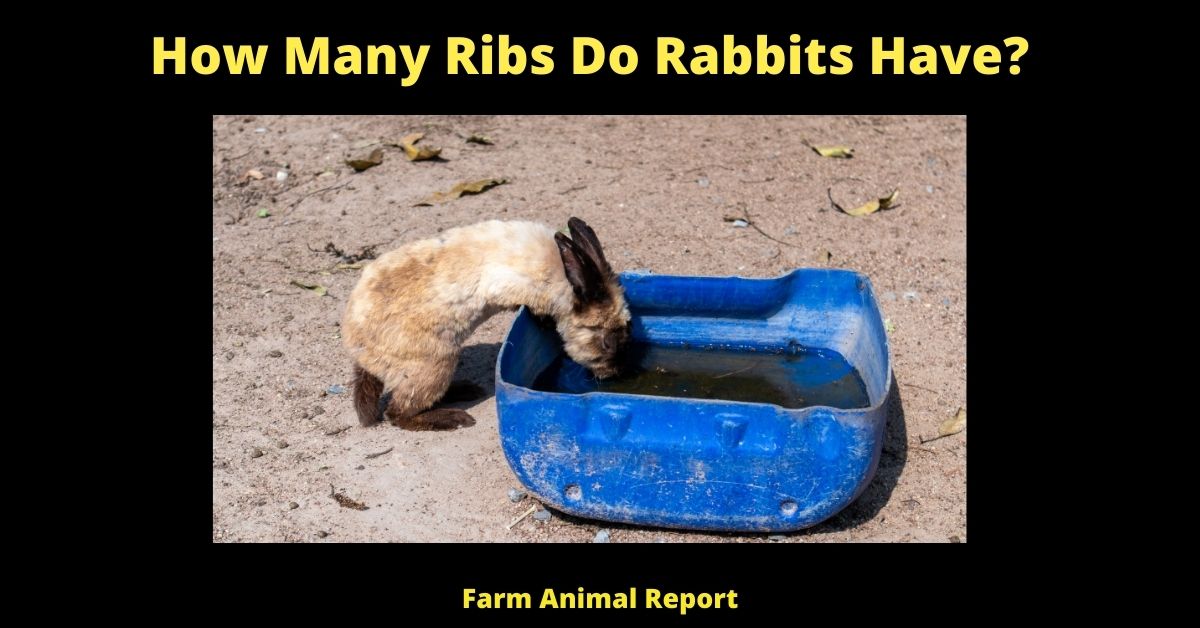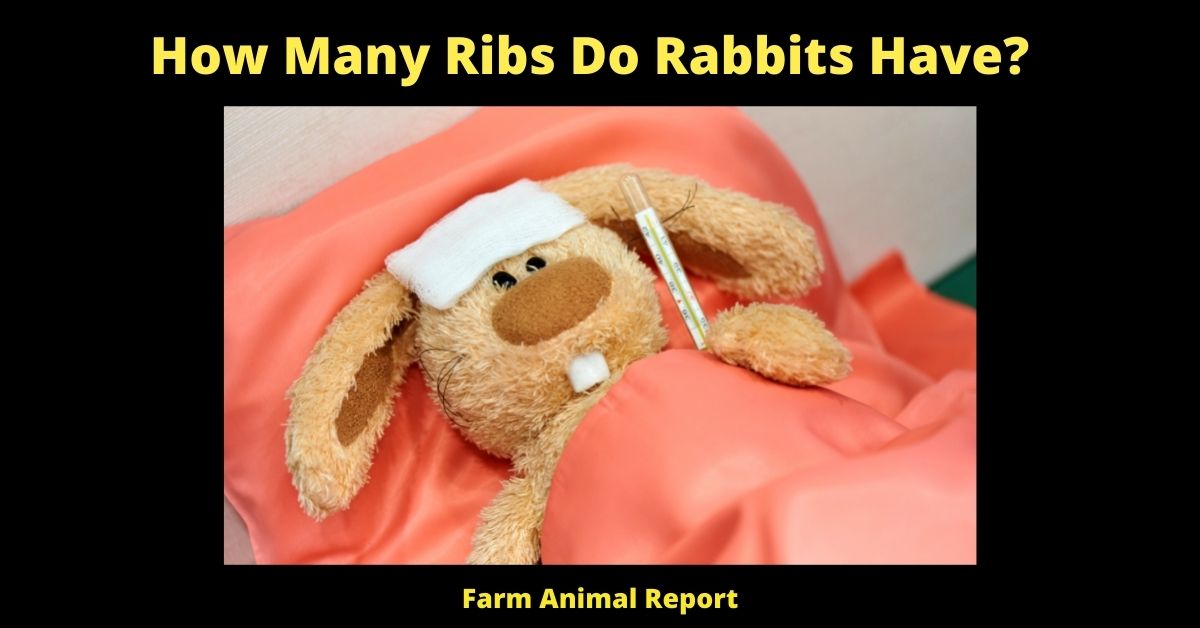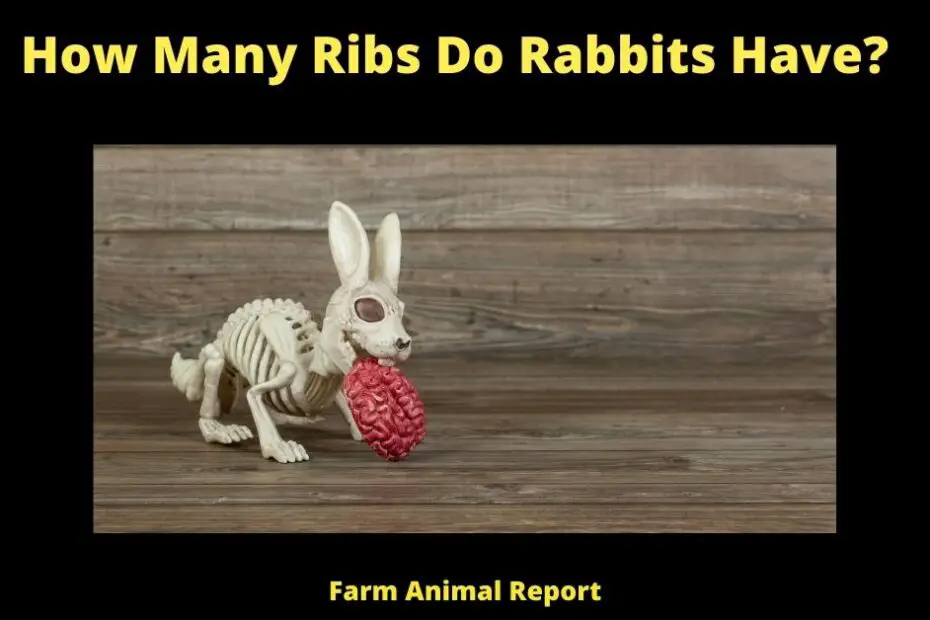How Many Ribs Do Rabbits Have – The New Zealand white rabbit’s pectoral girdle is one of the most developed in rabbits, providing attachments for many muscles that affect posture. These creatures can be 12 or 13 ribs based on their genetic makeup! Average Pet Rabbits have 10 Ribs.
How Many Ribs Do Rabbits Have?
Do you know how many ribs rabbits have? They have ten! Rabbits are interesting creatures, and they have a lot of anatomical features that differ from other animals. In this blog post, we will discuss the anatomy of rabbits and everything that makes them unique. We will also explore some of the myths and misconceptions about these animals. Stay tuned for more information about these furry creatures!
How Many Ribs Do Rabbits have Compared to Other Animals?
In comparing the number of Ribs the Following Farm animals have, they are;
- Rabbits – Ten
- Cattle – Twenty Four
- Sheep – Eighteen
- Pigs – Sixteen
- Chickens – Eighteen
- Dogs – Twenty Four
- Cats – Twenty Two
- Humans – Twelve
Check Out Amazon for Resources about Breeding Rabbits
The average number of ribs among these animals is Seventeen and a Half. So, the next time someone asks you how many ribs a rabbit has, you can tell them that rabbits have ten ribs, just like humans!
Rabbit Ribs are Classified as; Calcium, Meat and Bones
The Rabbits Ribs are classified into three sections; the True Ribs, the False Ribs, and the Floating Ribs.
The True Ribs are the ribs that attach directly to the sternum.
The False Ribs are the ribs that do not attach directly to the sternum but are connected by cartilage.
The Floating Ribs are the ribs that are not attached to either the sternum or another rib.
Rabbits have more false ribs than any other type of rib. This is because they need their extra false ribs for their digestive system!
Rabbit Ribs are made up of
The ribs of a rabbit are made up of the sternum, costal bone, and costal cartilage. The sternum is a long, flat bone that forms the center of the rib cage. The costal bone is a small, triangular bone that attaches to the sternum. The costal cartilage is a thin layer of connective tissue that helps to hold the ribs in place. Together, these three bones provide support and protection for the lungs and other internal organs.
Sternum – The Rabbits sternum, or breastbone, is a long, flat bone that runs the length of the body from the neck to the belly. The sternum is important for several reasons. First, it provides attachments for the muscles of the chest and shoulders.
These muscles are responsible for moving the front legs. Second, the sternum houses a number of important blood vessels and nerves. The veins and arteries that run along the sternum carry oxygen-rich blood to and from the heart.
The nerves of the sternum helps to relay messages from the brain to the rest of the body. Finally, the sternum protects many of the internal organs, such as the heart and lungs. Without this important bone, the rabbits would be vulnerable to injury.

Costal Bone
The Rabbits Coastal Bone in the Ribs (RCBR) is a small, hard, mineralized structure located at the junction of the ribs and sternum. It has a number of important functions, including:
- RCBR protects the heart and lungs from damage by stabilizing the ribcage.
- RCBR helps to anchor the muscles that attach to the ribs and sternum, allowing them to generate more force when contracting.
- RCBR helps to transmit sound vibrations from the lungs to the inner ear, allowing rabbits to hear low-frequency sounds.
- The RCBR is an essential part of the rabbit anatomy and plays a vital role in their overall health and wellbeing.
Costal cartilage – Rabbit coastal cartilage is located in the ribs and helps to protect the lungs. This cartilage is strong and flexible, and it acts as a shock absorber for the lungs. It also helps to keep the lungs from collapsing when we exhale.
The cartilage is connected to the ribs by ligaments, and it helps to keep the rib cage stable. Without this cartilage, the ribs would be more likely to break or dislocate.
Additionally, the cartilage provides support for the muscles that attach to the ribs. These muscles help us to breathe, and they would not be able to function properly without the support of the Rabbit coastal cartilage.
What do the Rabbits Rib Cage Do For the Rabbit?
The rabbit’s rib cage consists of 13 pairs of ribs. There are 12 regular ribs and one pair of floating ribs. The floating ribs are not attached to the sternum or breastbone. This makes the rabbit’s chest flexible so it can move easily through narrow spaces.
The rabbit’s rib cage also protects its heart and lungs from being injured by predators. The ribs are connected to each other by ligaments, which allow them to move as the rabbit breathes. The combination of flexibility and strength in the rabbit’s rib cage makes it an important part of the rabbit’s anatomy.
The rabbit’s rib cage serves several important functions.
First, it protects the rabbit’s vital organs from predators and other dangers.
Second, it helps the rabbit to stay warm by trapping body heat.
Third, it provides support for the rabbit’s musculature, allowing the rabbit to move its limbs freely. fourth, it helps the rabbit to digest its food properly.
Finally, it helps the rabbit to breathe properly by expanding and contracting as the rabbit breathes in and out. Consequently, the rabbit’s rib cage is a vital part of its anatomy that plays an important role in keeping the rabbit healthy and safe.

What is a Rabbit’s Pectoral Girdle?
The pectoral girdle of a rabbit is a U-shaped bone that connects the forelimbs to the axial skeleton. This girdle is composed of the left and right clavicles and the manubrium, which are connected by a fibrous strap-like ligament.
The pectoral girdle provides attachment points for muscles that move the forelimbs, as well as protecting the thoracic cavity. In addition, this girdle helps to transmit forces from the limbs to the axial skeleton, which is important for locomotion. Because of its importance in locomotion, the pectoral girdle is one of the most evolutionarily conserved features in mammals.
Although its exact form may vary between species, the general structure of the pectoral girdle is strikingly similar across a wide range of mammals.
The Pectoral Girdle is the bony structure in the front of a rabbit’s chest that connects the forelimbs to the rest of the skeleton. This girdle consists of two parts: the clavicle, which connects to the neck, and the scapula, which connects to the spine.
Together, these bones form a strong framework that allows rabbits to move their forelimbs in a wide range of motions. The pectoral girdle also provides attachment points for several muscles that are responsible for moving the forelimbs. As a result, this structure plays a vital role in a rabbit’s ability to move and perform basic actions such as scratching and grooming.
What is the Rabbits Clavicle?
The Rabbit’s clavicle, or “wishbone,” is a small, delicate bone located at the base of the neck. This bone helps to support the head and allows the front legs to move freely. The clavicle is also essential for keeping the trachea and esophagus in place.
Without this bone, rabbits would be unable to move their heads and front legs independently. As a result, they would be unable to eat or drink properly. In addition, the clavicle provides attachment points for several muscles, tendons, and ligaments.
These structures help to support the head and neck and enable rabbits to perform a variety of movements. Together, these functions make the clavicle an essential part of a rabbit’s anatomy.

What is a Rabbits Scapula?
The rabbit’s scapula, or shoulder blade, is a large, flat bone that helps to support the animal’s front limbs. rabbits have very powerful front limbs, and the scapula helps to provide added strength and stability.
The bone is also connected to the ribs, which helps to protect the lungs and other organs from injuries. In addition, the scapula provides attachment points for muscles, tendons, and ligaments. These tissues work together to allow the rabbit to move its front limbs in a wide range of motion.
Without the scapula, rabbits would be unable to perform many of their everyday activities, such as grooming, eating, and running. As such, the scapula plays a vital role in the overall health and wellbeing of these animals.
Can a Rabbit get its Rib Broken?
While a fall or other accident can certainly break a rabbit’s ribs, it’s not as common as you might think. Rabbits have very strong and flexible ribs that are designed to protect their internal organs. However, if a fall or other traumatic event puts enough force on the ribs, they can break.
If you suspect that your rabbit has broken a rib, it’s important to take them to the veterinarian right away. In some cases, the ribs may need to be surgically repaired. Fortunately, most rabbits make a full recovery and go on to live happy and healthy lives.
Rabbits are known for their strong and flexible bones, which allow them to move quickly and efficiently. However, this does not mean that their bones are indestructible. In fact, a rabbit’s ribs are relatively fragile, and it is not uncommon for them to be broken.
There are several ways in which a rabbit can break its ribs. The most common cause is trauma, such as being hit by a car or falling from a height. Bone cancer can also weaken the bones and make them more susceptible to fractures.
In some cases, the ribs may even be broken during surgery. Despite the potential risks, broken ribs are usually not serious and will heal on their own with time. However, if the ribs are severely displaced or the lungs are punctured, emergency veterinary care may be required.
How to tell your Rabbits Rib Might Be Broken?
Rabbits are prey animals and as such have a very high startle reflex. A startled rabbit may jump or run into something, fall off of something, or be injured by another animal. All of these things can cause a rib to be broken. symptoms that your rabbit might have a broken rib are: favoring one side, not wanting to move around much, not eating or drinking well, hunched up posture, grinding teeth more than normal, and crying out when touched.
If you think your rabbit has a broken rib it is best to take it to the vet right away as it can be a very painful injury. Left untreated a broken rib can cause further problems such as pneumonia.
Rabbits are fragile creatures, and their ribs are particularly susceptible to injury. A fall or a direct blow to the chest can easily break one or more ribs.
Without prompt veterinary treatment, a broken rib can cause serious internal damage, including punctured lungs and perforated intestines. Fortunately, there are several signs that can indicate a broken rib in a rabbit. If your rabbit is having difficulty breathing or shows signs of pain when touched, it may have a broken rib.
Additionally, if you notice any swelling or deformity in your rabbit’s chest, it is important to seek veterinary care immediately. While broken ribs are serious injuries, they can be successfully treated if they are caught early.
How to Treat a Rabbit with a Broken Rib?
When a rabbit has a broken rib, it is important to seek veterinary care as soon as possible. While pain relief and rest are the mainstays of treatment, your veterinarian may also recommend wrapping the chest to stabilize the ribs. In some cases, surgery may be necessary to repair the break.
Until you can get your rabbit to the vet, there are a few things you can do to help ease its pain.
First, provide a quiet and comfortable place for your rabbit to rest. This may mean confining it to a smaller area or setting up a makeshift bed in a box or crate.
Second, offer soft food and water, as your rabbit may have difficulty eating and drinking if its ribs are painful.
Finally, try giving your rabbit over-the-counter pain medication designed for pets, such as acetaminophen or ibuprofen. As always, consult with your veterinarian before giving any medication to your pet. With proper care, most rabbits recover fully from broken ribs within a few weeks.
Other Tags
- Rabbit costal cartilage
- Costal cartilage graft
- Costal rib cartilage
- Regenerated costal cartilage
- Costal cartilage tissue
- Tissue costal cartilage
- Autologous costal cartilage
- Costal cartilage transplantation
- Costal cartilage segment
Final Thoughts – How Many Ribs do Rabbits Have?
A Rabbits Ribs are an important part of your rabbit’s anatomy. They are what help your rabbit move quickly and efficiently. However, this does not mean that their bones are indestructible. In fact, a rabbit’s ribs are relatively fragile, and it is not uncommon for them to be broken.
While broken ribs are serious injuries, they can be successfully treated if they are caught early. If you think your rabbit has a broken rib it is best to take it to the vet right away as it can be a very painful injury. With proper care, most rabbits recover fully from broken ribs within a few weeks.





